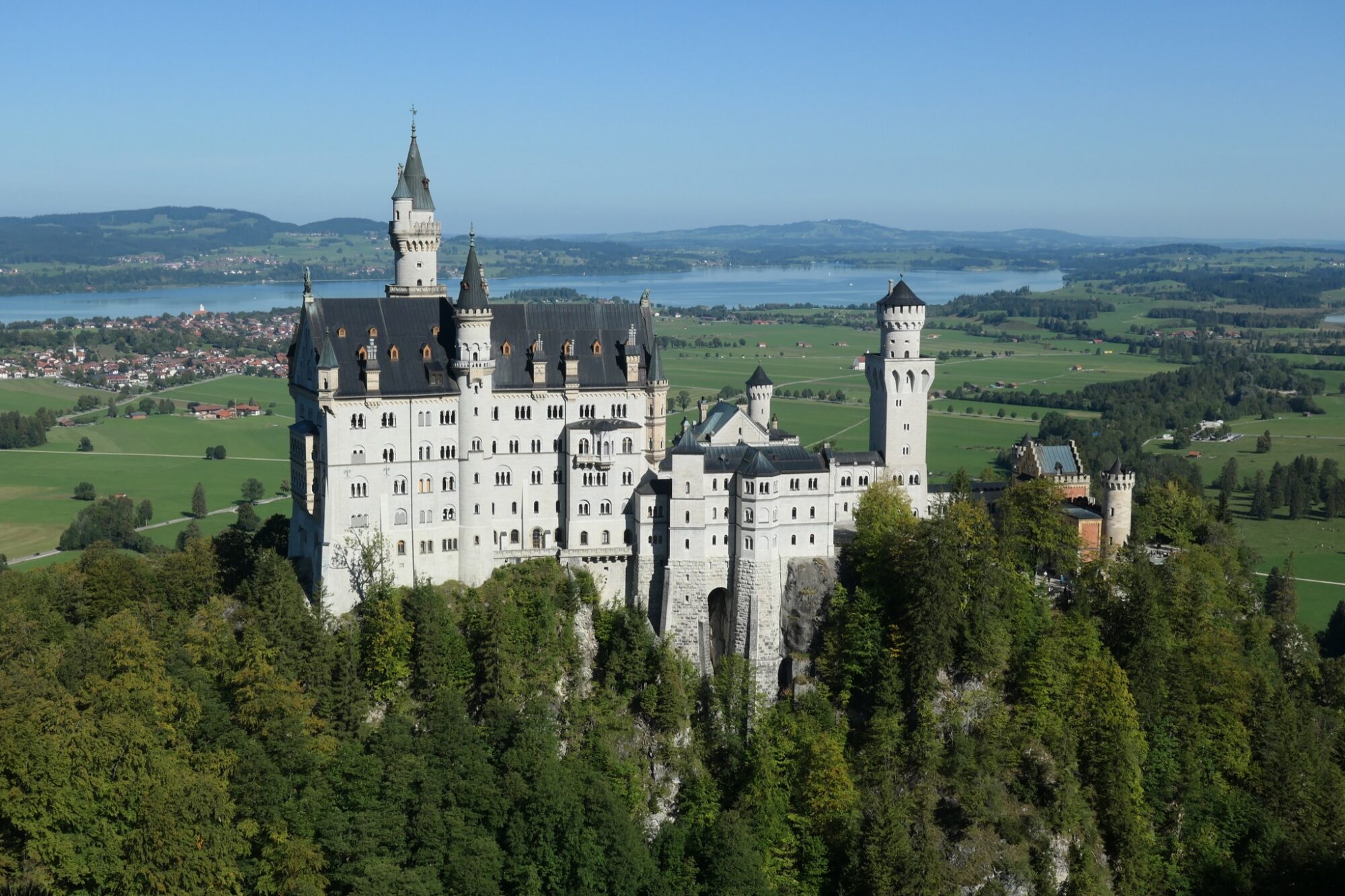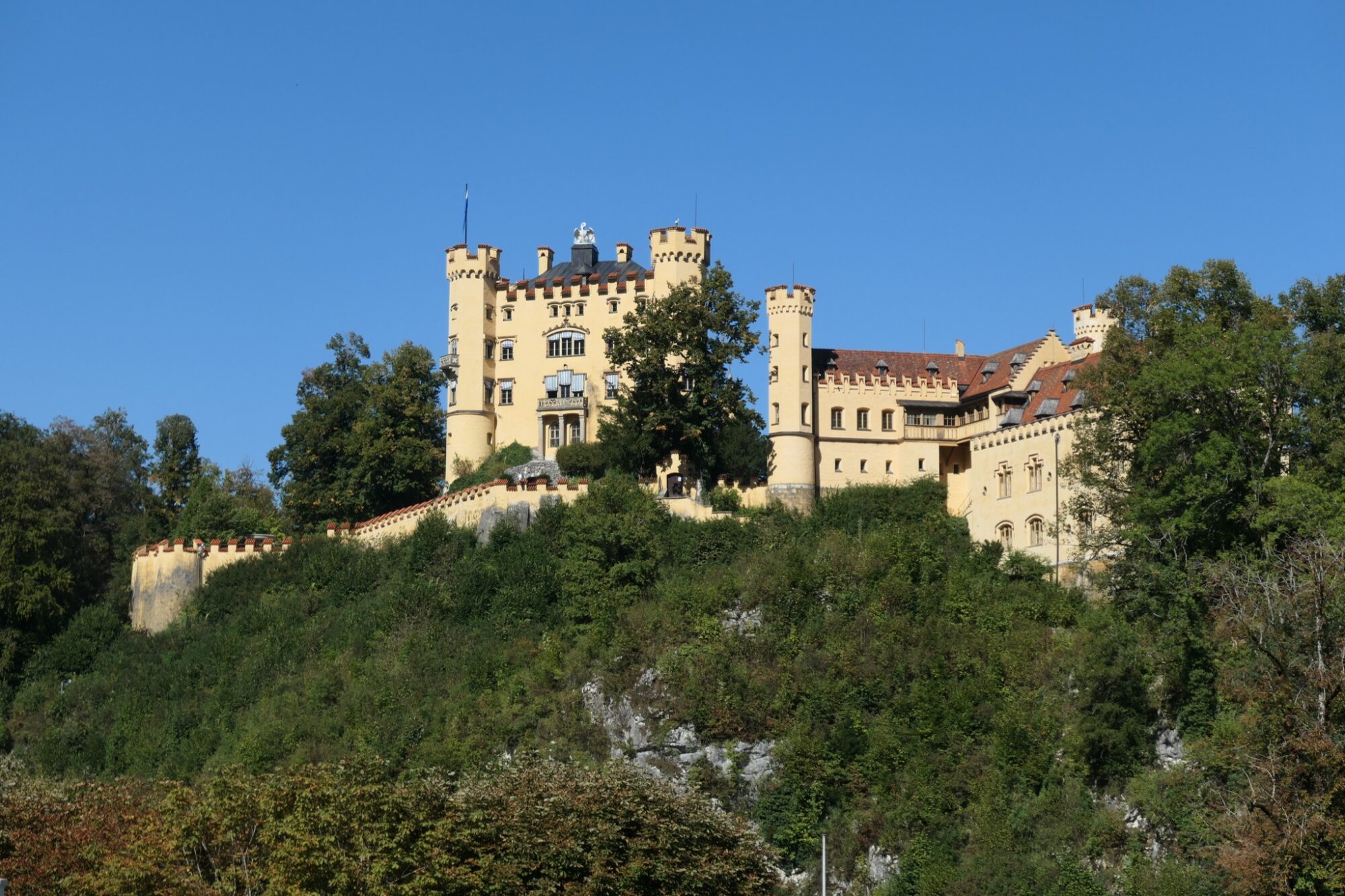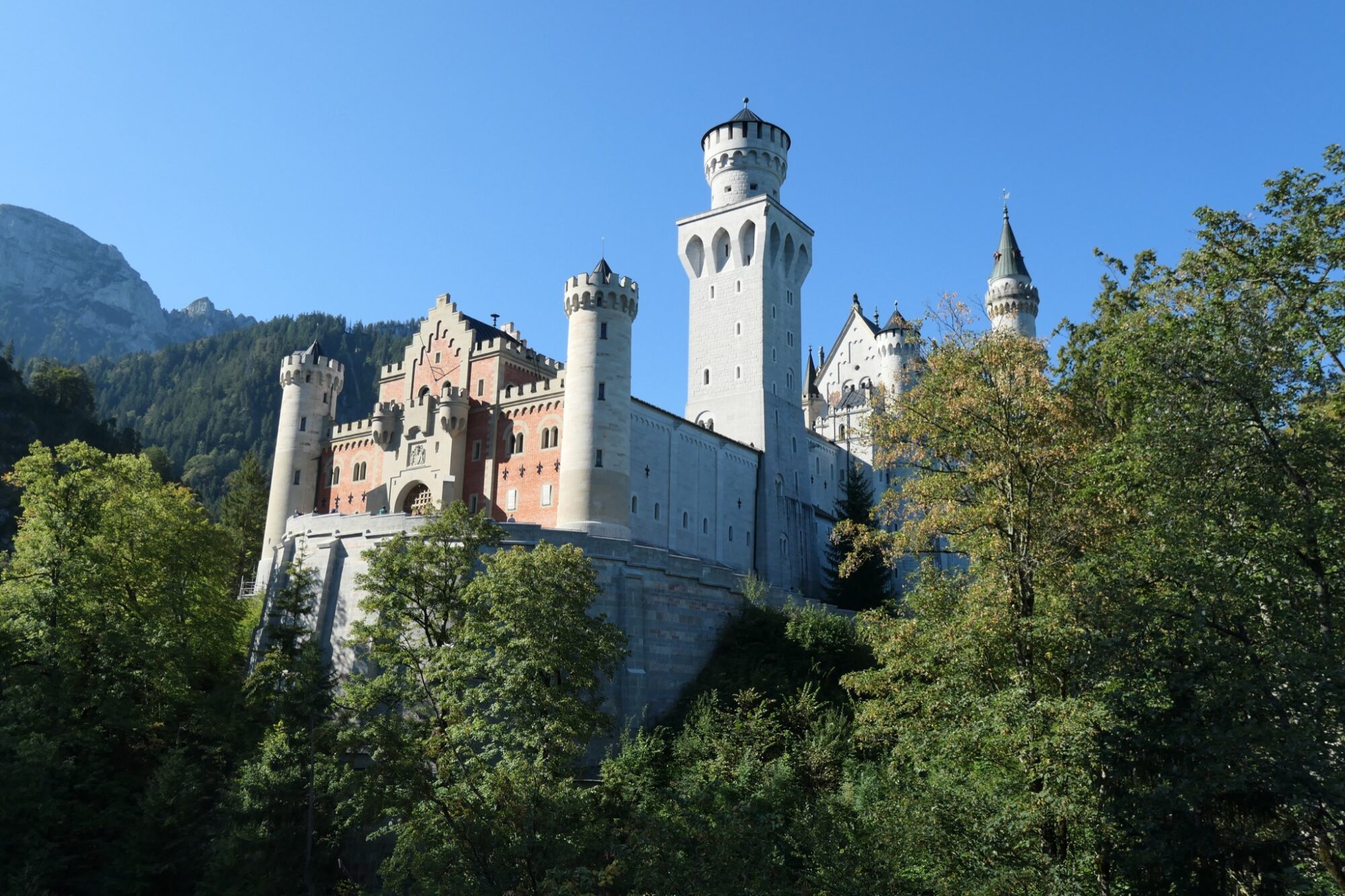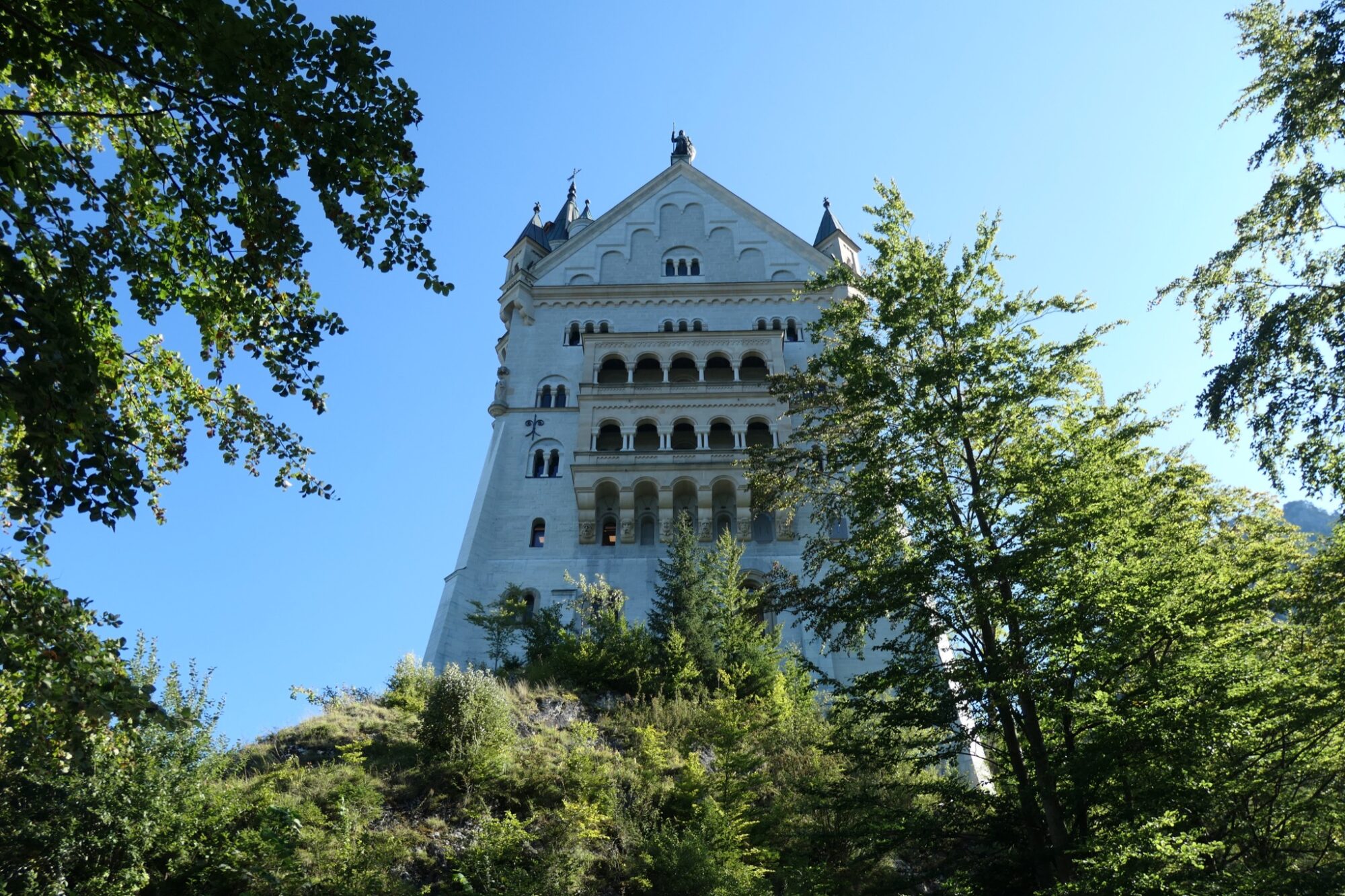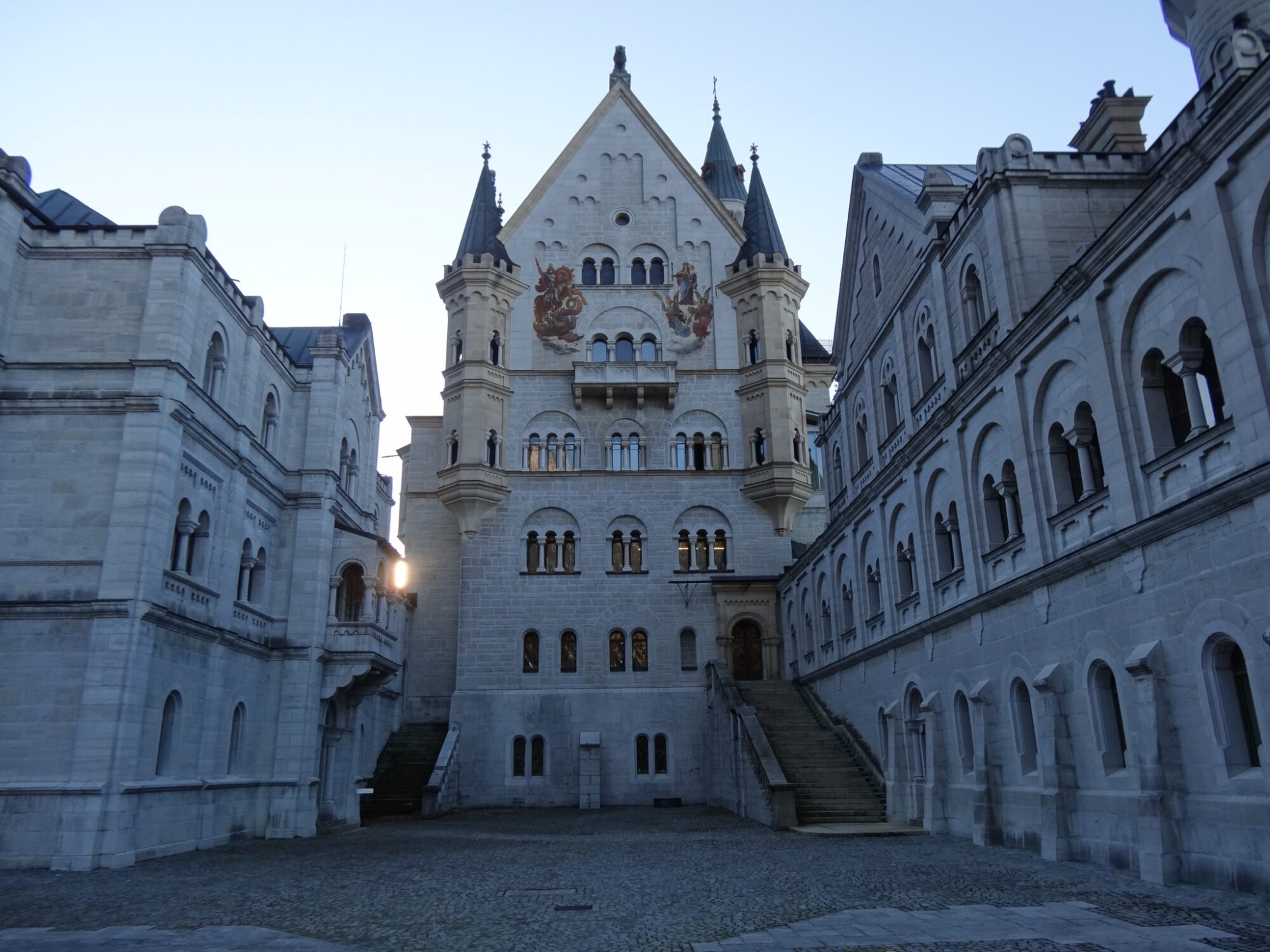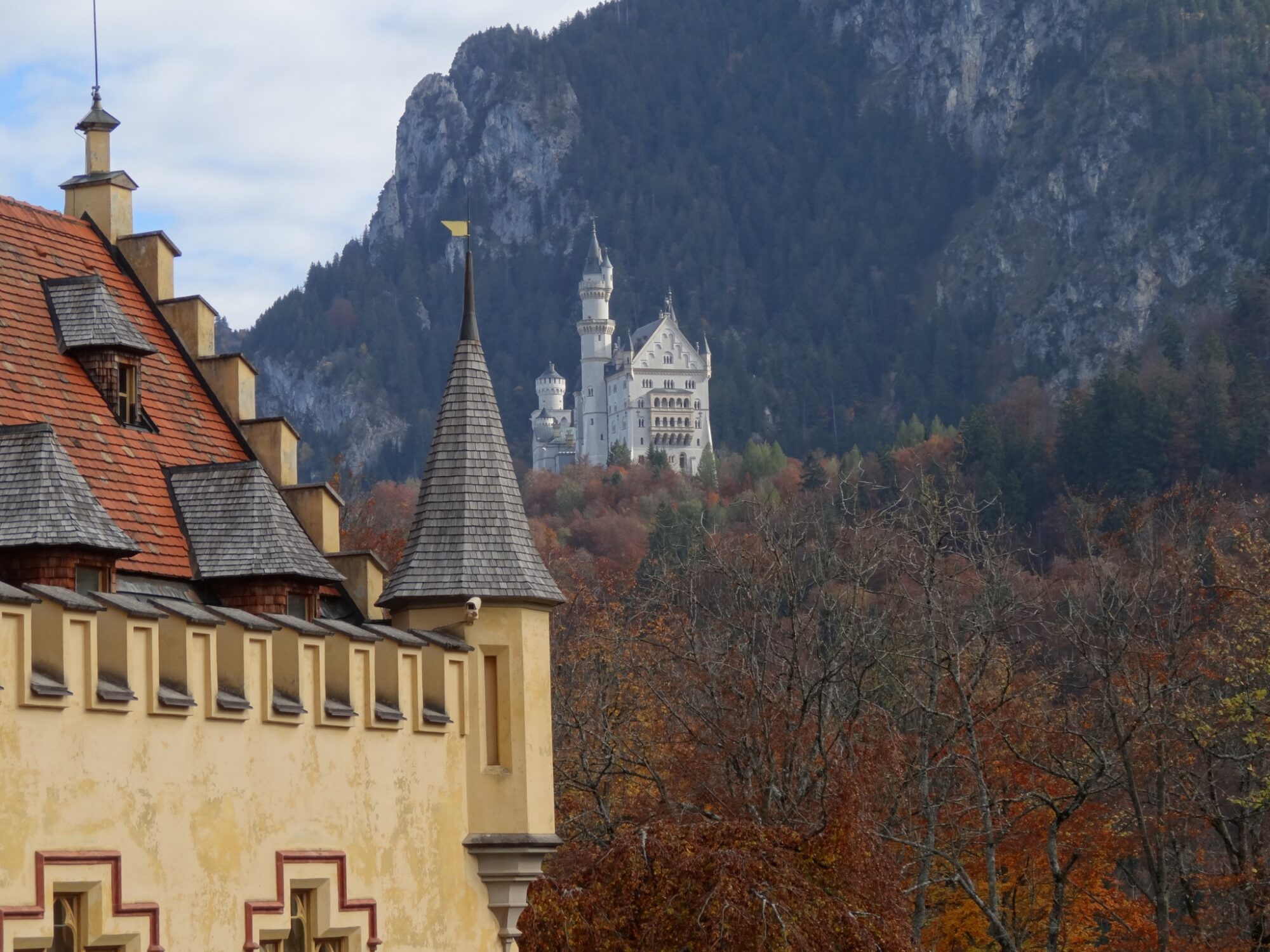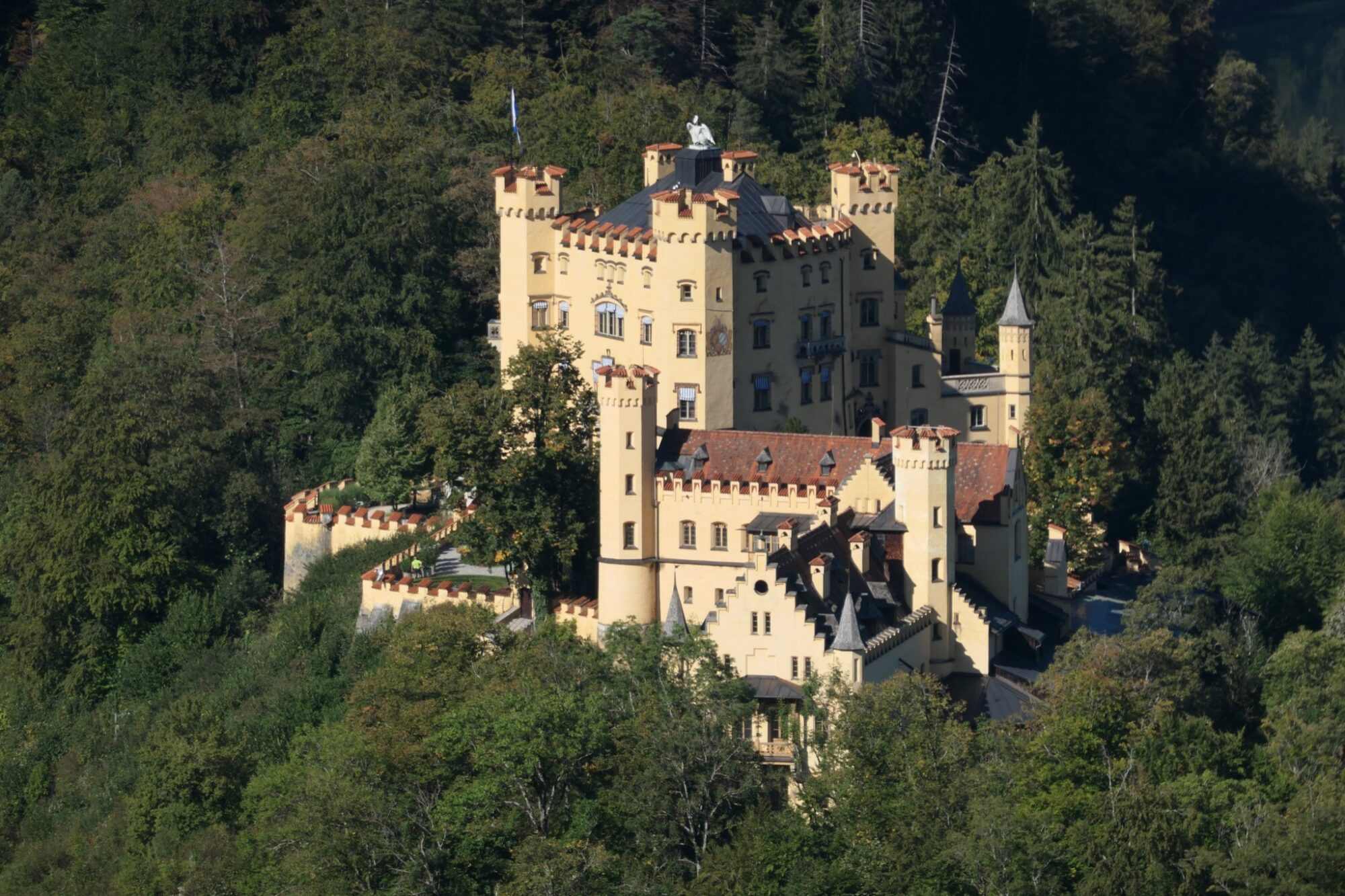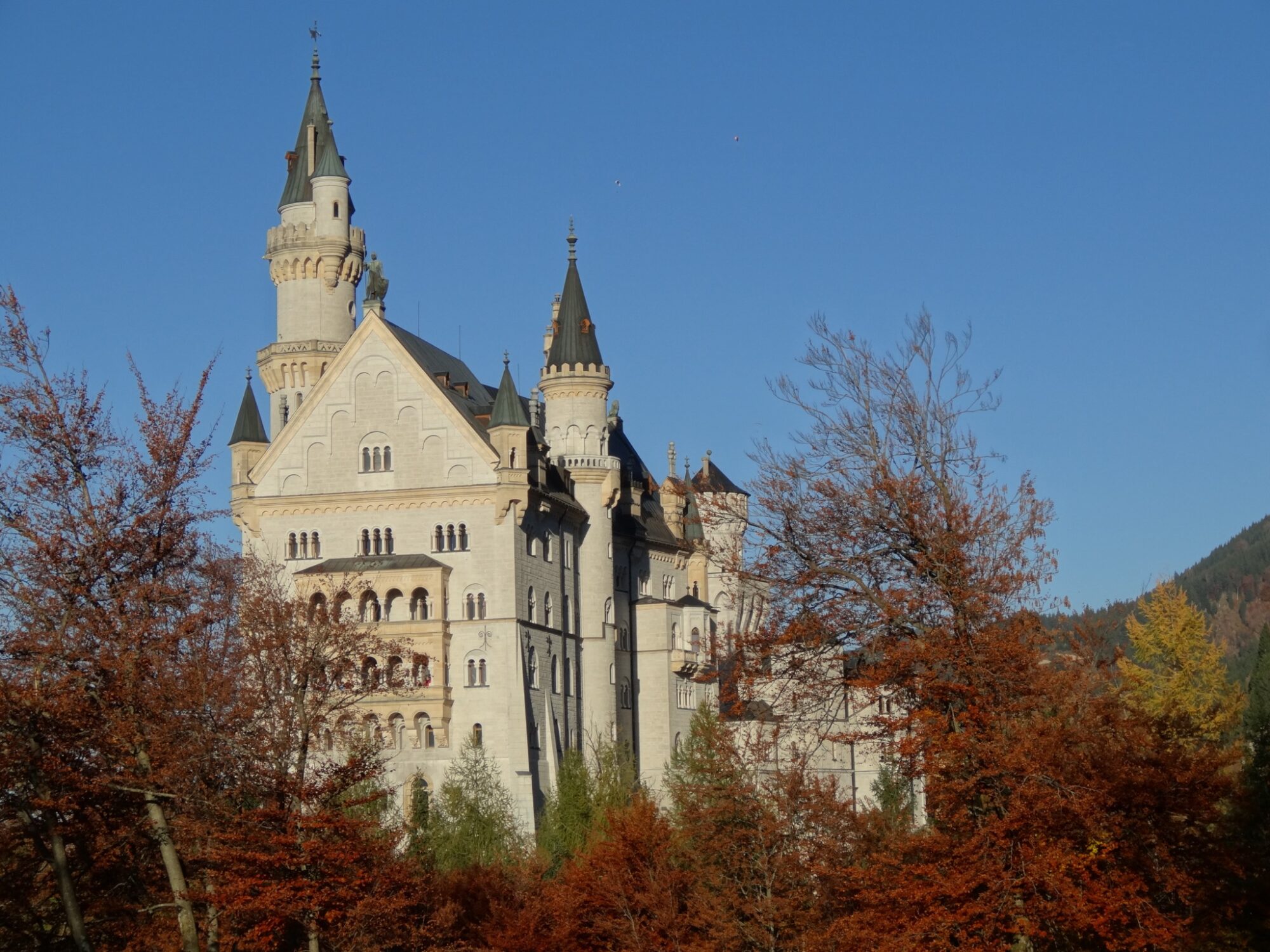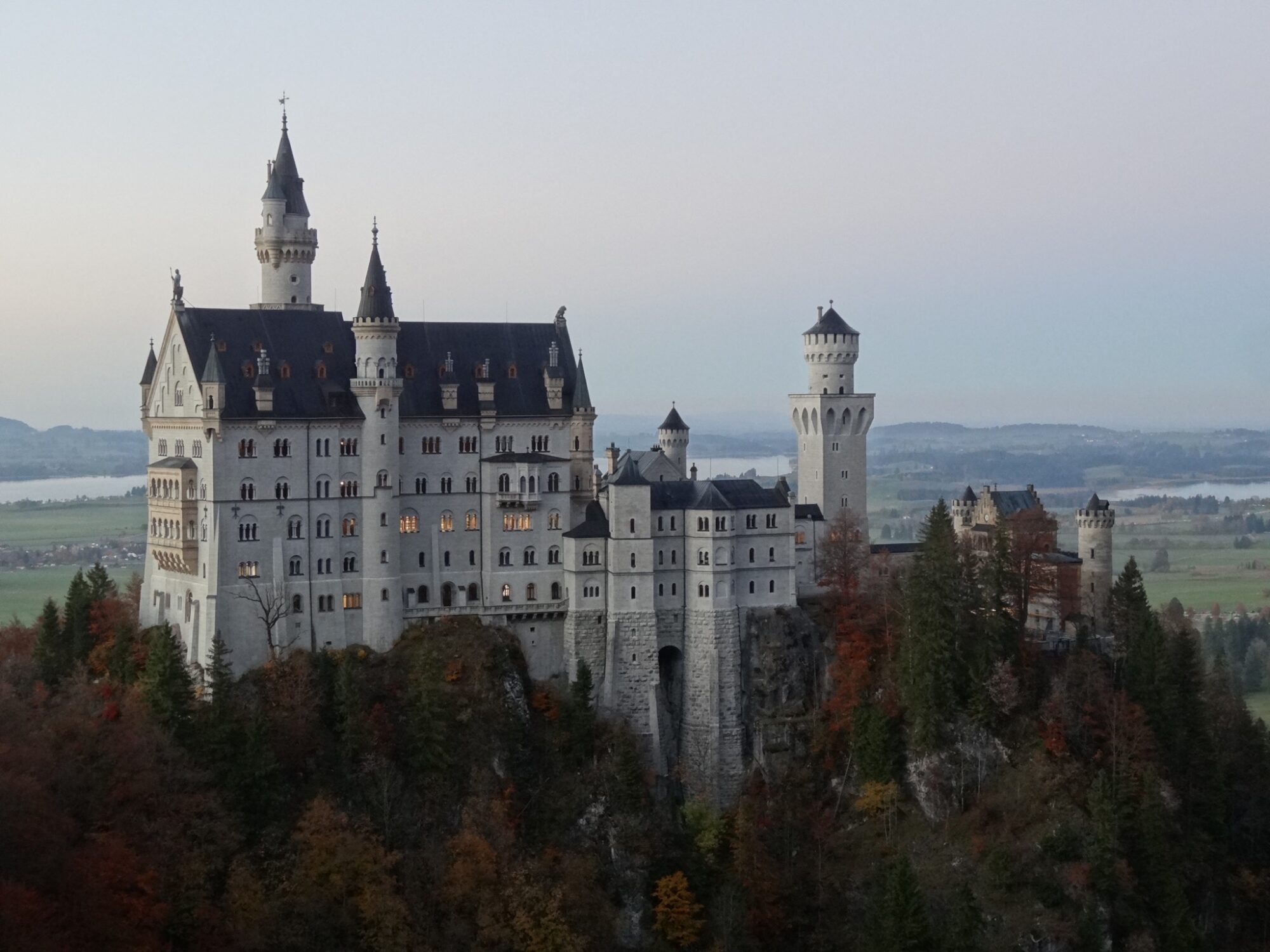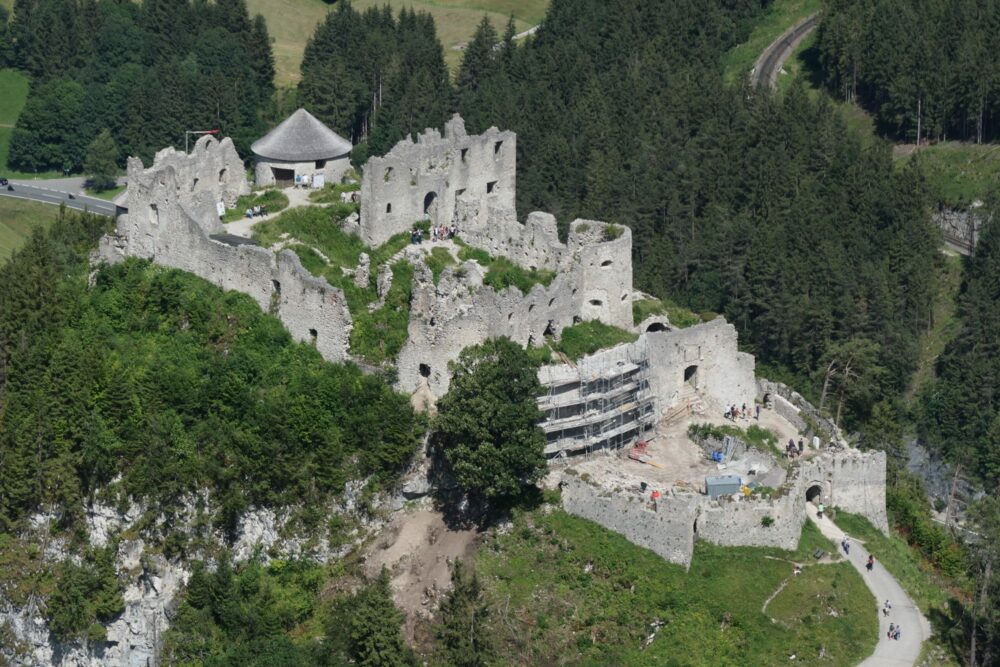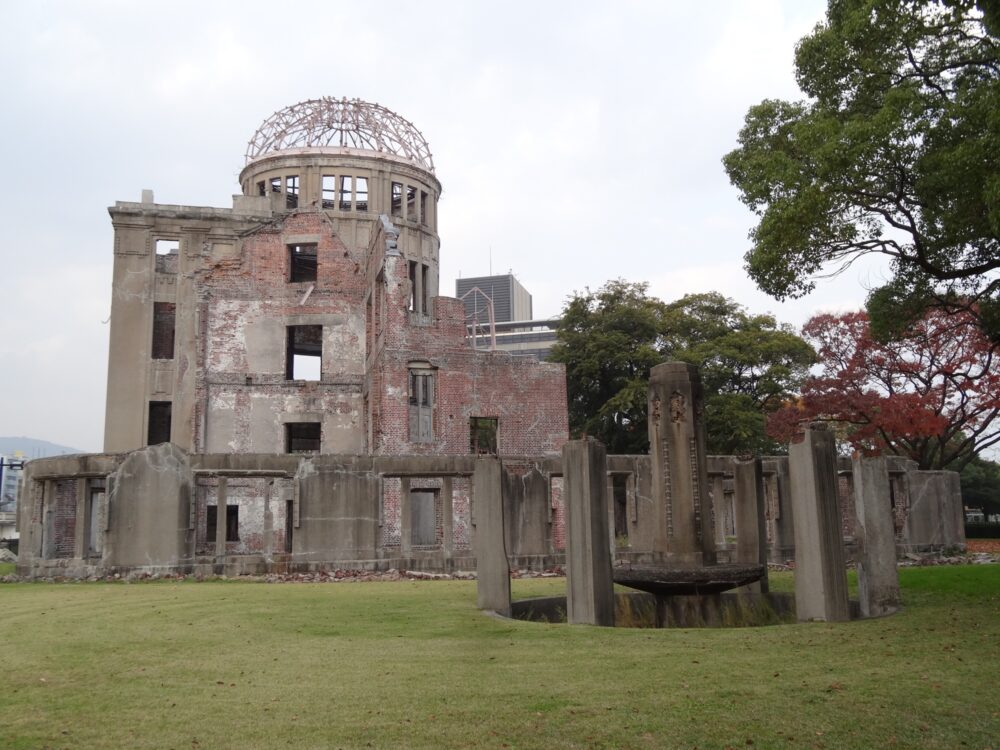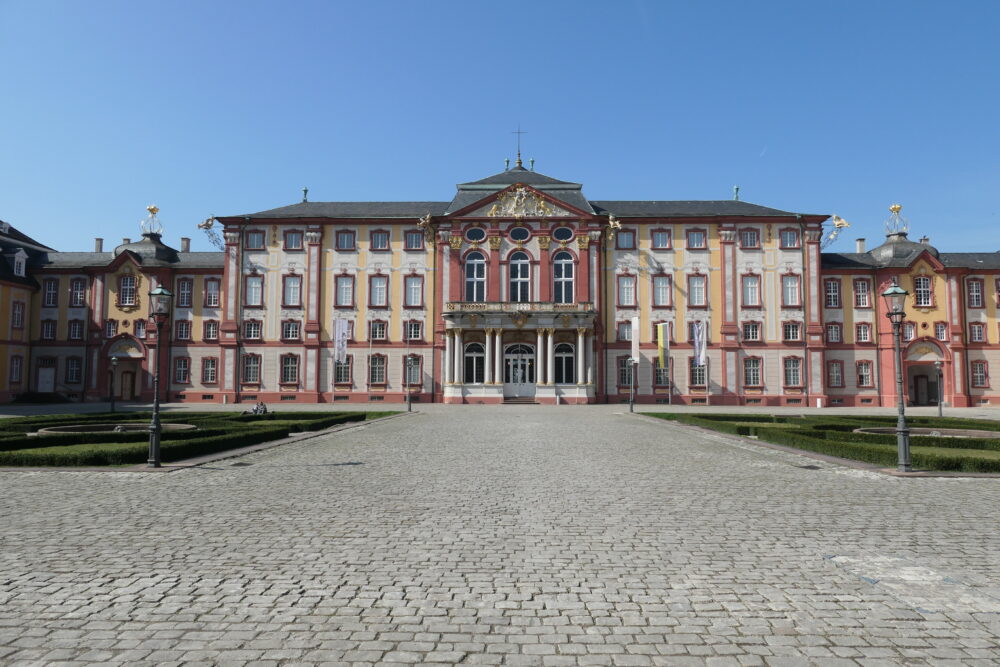Things nobody tells you about Neuschwanstein und Hohenschwangau
There is quite some irony connected to the two castles Neuschwanstein und Hohenschwangau. Here are the details that nobody tells you about. But let’s start at the beginning:
Allow me to introduce Ludwig II, King of Bavaria and later lord of castle Neuschwanstein, to you. He’s also known as the fairy tale king. He dreamed of having his own middle ages style, knight’s castle.
Now, please keep in mind that we’re talking about the 19th century. A time at which castles were a fashion thing. Nobles all over Europe reconstructed or built them based on historical models.
Ludwig’s Uncle, King Friedrich Wilhelm IV of Prussia, for example, built palace Stolzenfels and castle Hohenzollern. His father, King Maximilian II, remodeled Hohenschwangau from a medieval castle into the romantic style palace it is today.
Castle Hohenschwangau
King Ludwig II spent part of his childhood at Hohenschwangau. Unfortunately his Mother, Queen Marie, a person he was not very fond of, used Hohenschwangau as her summer residence.
So, obviously, he really needed his own palace.
Tip of the day: Click on a photo to see details about it.
And don’t forget to connect on Reddit, Pinterest or Twitter.
Building Castle Neuschwanstein
After his grandfather Ludwig I, passed away in 1868, the just 23 years young King Ludwig II inherited his apanage, which provided the money for his building projects. Castle Neuschwanstein was the first of it. Construction started 1869, about a year after his grandfather’s death.
39.6 Million Euro
The costs were at first estimated at 3.2 million Mark, which, at the beginning, he paid from his private property. However, the expenses quickly outgrew his budget, forcing him to cover what’s missing by loans. At the time of Ludwig’s death in 1886, the construction costs of Neuschwanstein summed up to 6.180.047 Mark. And it was not even finished yet.
Considering that one Mark from 1873 corresponds to €6,40 (in 2020), Neuschwanstein’s building costs summed up to about €39.6 million.
In 1883, Ludwig was already more than 7 million Mark in debt.
The Bavarian government was seriously un-amused about it and declared him incapable of governing on 10 June 1886. He was placed in custody two days later and transported to Castle Berg at Lake Starnberg, where (and this is the author’s interpretation) he went for a swim from which he would never return.
Well, at least not alive…
The great name exchange
let’s go a little further back in time and have a look at the roots of Neuschwanstein:
Documents from 1090 mention two small castles, named Vorderhohenschwangau (Front-Hohenschwangau) and Hinterhohenschwangau (Back-Hohenschwangau) at the location where Neuschwanstein is today. Vorderhohenschwangau consisted of a donjon and residential quarters. Hinterhohenschwangau was just a fortified residential tower, or keep. Both were separated by a neck ditch. Those two castles were abandoned long before the 19th century and fell into ruin. The location was just perfect. Especially for a castle that would be modeled after castle Wartburg, Neuschwanstein’s “template” so to speak.
And then there was the old Schwanstein castle, which dates back to 1397. Ludwig’s father rebuilt it 1837 to the palace that is today known as Hohenschwangau.
Some time during the construction, the old Schwanstein castle was renamed to Hohenschwangau and Ludwig’s newly built castle was named Neuschwanstein. Basically switching the historical names of the two (or better said three) castles. Might not appear like a big deal at first, but it gets interesting if you think about it:
A Royal Rascal Prank?
Ironically, ‘Hohen’ means ‘high’ in German; in the context of elevation. Castles whose names start with ‘Hohen’, like Hohensalzburg in Salzburg for example, are built on top of a mountain. Hohenschwangau, as you can see at the pictures, doesn’t really fit that description and is also clearly below Neuschwanstein. Ludwig’s mother, in her ‘high-palace’, had to look up to her son’s castle. Making it look as if the name switch was a rascal prank for his mother…
In Summary: Six castles!
To sum up the castle’s history: Neuschwanstein (1) was modeled after Wartburg (2) and built on the ruins of the two castles Vorderhohenschwangau (3) and Hinterhohenschwangau (4). Today’s Hohenschwangau (5) has its roots in the medieval Schwanstein castle (6). Looking at it from this perspective, you could say that Neuschwanstein roots in five other castles.
Unfinished Business
Construction of Neuschwanstein was never completed. Unfortunately the King “was passed away” too early to be able to finish it. Six weeks after his death, Neuschwanstein was opened to the public, something Ludwig never intended to do.
It took the castle administration just 13 years to settle the construction debts. And so it turned out that killing Ludwig, just because of its debt, was pretty much overkill.
Should you visit Neuschwanstein, take a closer look at the cafeteria area (that’s short before the exit, just at the end of the guided tour). You can easily spot sketches, steel bars, and other traces of the unfinished construction.
Clarification on Ludwig’s death:
Allow me to set that straight: According to the history books, King Ludwig committed suicide. However, the details of his death support this idea rather poorly: What’s known is that King Ludwig II and Dr. Gudden went for an evening walk from which they would never return. Dr. Gudden died a violent death and King Ludwig drowned. That’s the oversimplified short version.
So let’s quickly think about it: What events could lead to such an outcome?
Here’s my hypothesis: Ludwig and Gudden strolled down the shore at lake Starnberg. All out of a sudden Ludwig suffered a severe depression. He wanted to kill himself! Dr. Gudden desperately tried to stop the King from taking his own life. A fight broke lose at which Ludwig killed Dr. Gudden (in self defense of course). Then, after Gudden was no longer interfering, Ludwig was able to peacefully commit suicide in all the dignity a King deserves.
Well yes, that makes total sense! (sarcasm intended!)
How about this version: A ruthless opportunist disposed a heavily indebted monarch by murdering him. To avoid unhealthy consequences (assassination of a King is usually not taken lightly), it was of course “a suicide“.
I just can’t help it: Suicide doesn’t sound plausible to me, but you are privileged to judge by yourself. However, please take these lines with a healthy dose of skepticism.
Visit Neuschwanstein and Hohenschwangau
Hohenschwangau and Neuschwanstein attract 1.5 million visitors a year. Needless to say, getting a ticket can be challenging. Online reservations work best, however, if you show up early enough, you can even get a ticket at the ticket counter. The problem is, that the ticket queue can quickly exceed the daily capacity.
If you find yourself at the end of a way too long queue, better have a look at the article “Castles on the romantic road“. It tells you a secret tip on how to score a last minute ticket to Neuschwanstein and Hohenschwangau. It also contains some nice pictures, so it’s certainly worth a visit. Beside that, the official website of Neuschwanstein is also worth a visit.
A final tip: 20 km to the south of Swangau is a small town called Reutte. There you’ll find three castle ruins right next to each other, plus a suspension bridge spanning a valley. Have a look the the post “Reutte Tyrol: Ehrenberg Castle, Fort Claudia and Schlosskopf” for details. It’s very much worth it!
